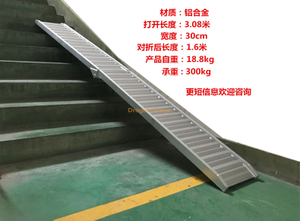
Traditionally, stage ramps have served the primary function of bridging height differences, allowing performers and technical equipment to navigate between different levels. However, the 90-degree turn stage ramp goes beyond this basic function, introducing a dynamic element that significantly impacts both the logistics of stage design and the overall theatrical experience.
The core innovation of this ramp lies in its ability to rotate on a central axis, allowing it to seamlessly transition between two distinct orientations: a standard straight ramp for conventional access, and a 90-degree angle, offering a unique spatial element that can be utilized in various ways. This versatility opens up a world of possibilities for stage designers and directors.

Accessibility Enhanced:
The 90-degree turn stage ramp represents a significant improvement in accessibility for performers and audience members with mobility challenges. The traditional single-level design often poses significant hurdles for individuals with wheelchairs or other mobility devices. The ability to rotate the ramp allows for smooth and effortless transitions between levels, eliminating the need for steep inclines or awkward maneuvering. Furthermore, the ramp's design can incorporate features like handrails and non-slip surfaces, ensuring safety and comfort for all users.
Enhanced Stage Versatility:
Beyond its accessibility benefits, the 90-degree turn stage ramp unlocks new creative possibilities for stage design. By incorporating this dynamic element, designers can create more visually engaging and intricate sets. The ability to rotate the ramp allows for the creation of multiple levels and platforms, adding depth and dimension to the stage. The 90-degree orientation can also be used to create dramatic entrances and exits, allowing performers to appear and disappear with captivating flair.

Practical Considerations:
The successful implementation of a 90-degree turn stage ramp requires careful planning and consideration. The size and weight of the ramp, as well as the load capacity it needs to accommodate, are crucial factors to address. The mechanism for rotation should be robust and reliable, ensuring smooth and controlled movement during performances. Safety features like safety locks and emergency stop mechanisms should be incorporated to prevent accidents.
































